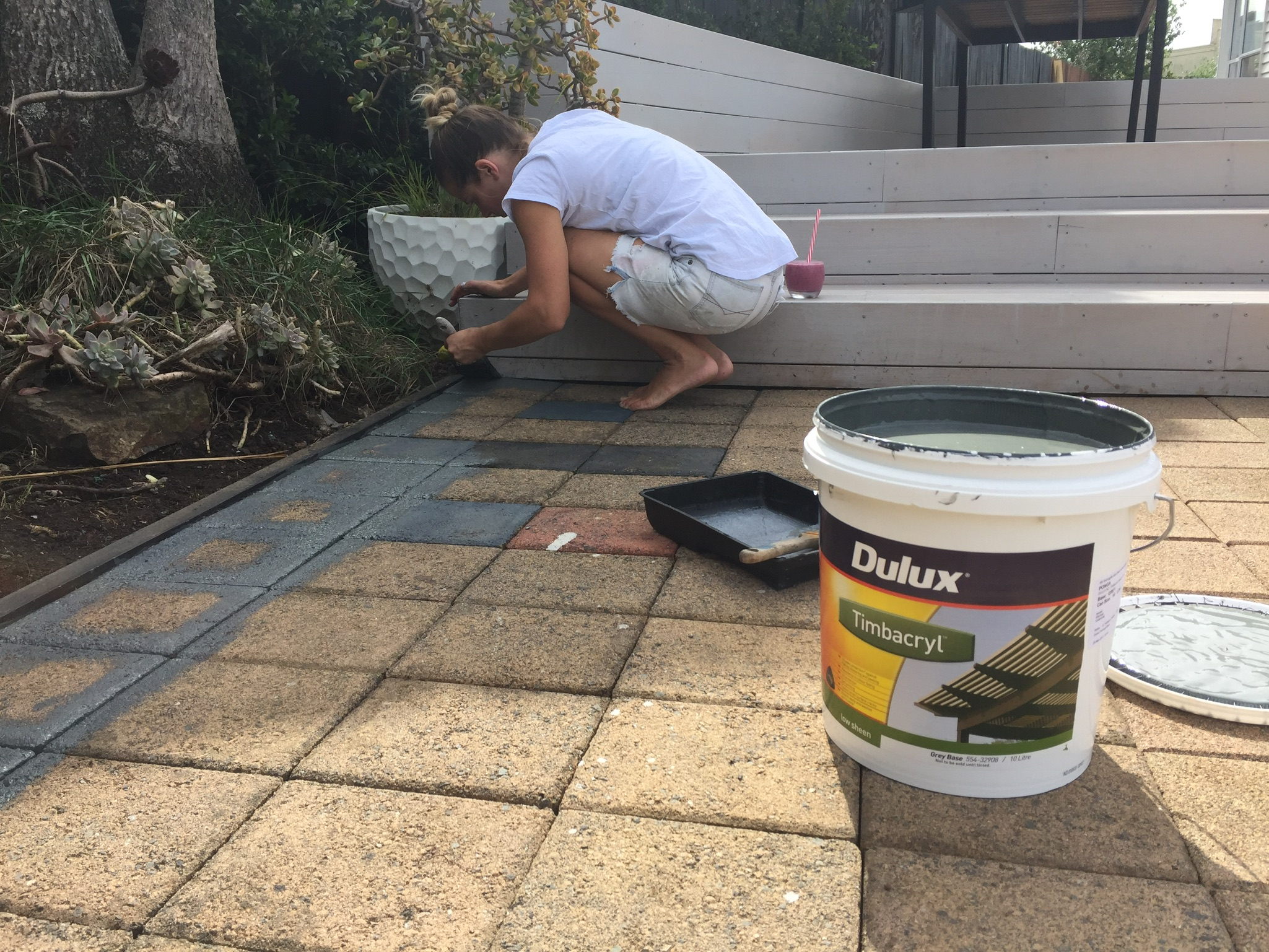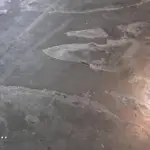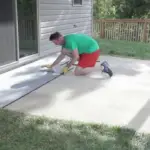It’s not that you start wondering “can you paint concrete pavers?” but in fact, you must paint pavers to last.
Yes you can paint pavers to give them a fresh look and protect them for years. You can use a roller or a sprayer but make sure to use the right color and paint type. You can use brush to cut into grooves and cracks and also make sure to allow proper cure time.
So, while your pavers have been faded substantially over years of time. You can regain the shine, color, and attractive look back by dyeing or painting the pavers.
Pavers has to be sealed or leveled otherwise they’ll fade or develop such issues later. The best part about staining the pavers is that you can allow the original color of the pavers to still exist and pass through the dye. And the best thing is that you can achieve the new look only on a fraction of cost to that of the complete replacement.
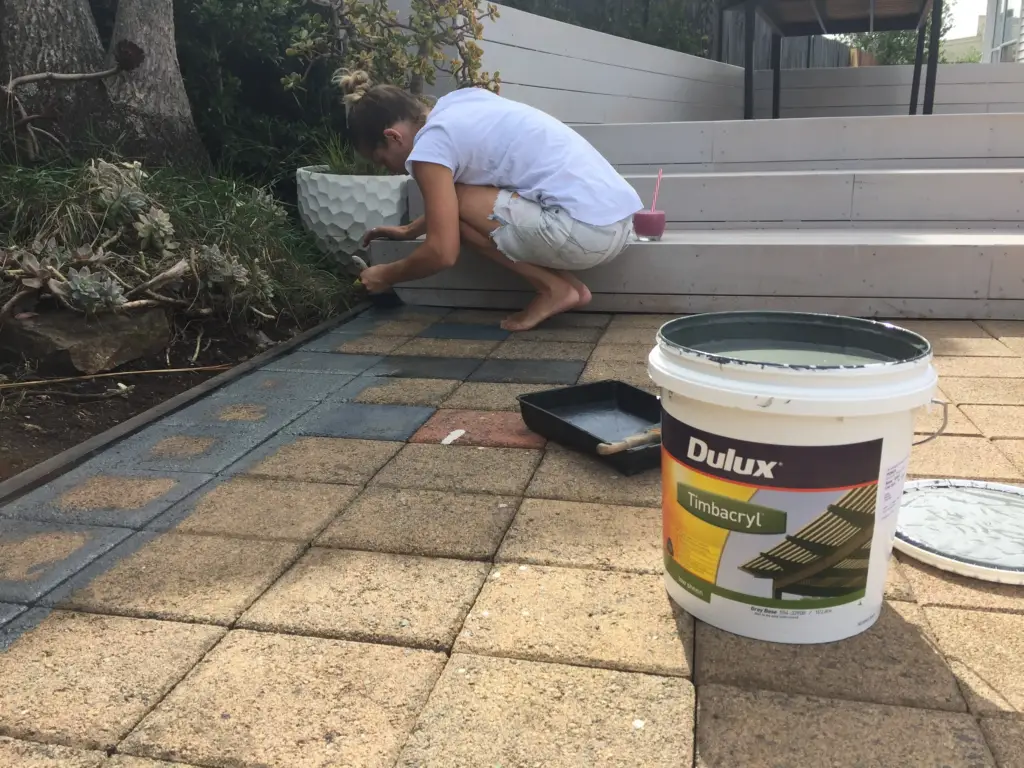
Can you paint pavers?
Your garden, driveway and patio are the first parts of your property guests and passersby see apart from your house’s facade. To make a good first impression, many homeowners take time to enhance their outdoor landscaping with pavers.
Pavers offer a versatile design element, enabling for unique patterns and adding value to your home. Not only can they extend living spaces outside, but they can also improve the aesthetic appeal of your outdoor area. However, over time concrete pavers may start looking worn out due to constant use and exposure to different elements.
Are you uncertain whether painting your pavers can breathe new life into them? Fortunately, painting them offers an unlimited palette of colors that can breathe life into any hardscape. Whether you want to match your home’s color scheme or add a pop of boldness, painting your pavers is both easy and effective.
Can you stain the pavers?
If you’re not interested in painting your concrete pavers, staining is another option to consider. Though the process is similar to painting, the results will differ.
Painting sits on top of pavers, while staining penetrates deeply into the material for a more organic aesthetic. Plus, staining is easier to apply than paint since it won’t peel off in adverse weather conditions like paint will.
Like Us on Facebook!
Concrete and masonry stains come in a range of colors, with brown, red, and pink being the most popular hues. Once applied, stain can last up to five years before needing to be reapplied; this simple task can be completed with either a brush or sprayer for instant rejuvenation of your pavers. With just one fresh coat of stain applied, they’ll look just as new within no time!
Subscribe Us on YouTube!
Steps to paint pavers
As previously mentioned, painting and staining concrete pavers is a similar process. Here’s a step-by-step guide to get you started:
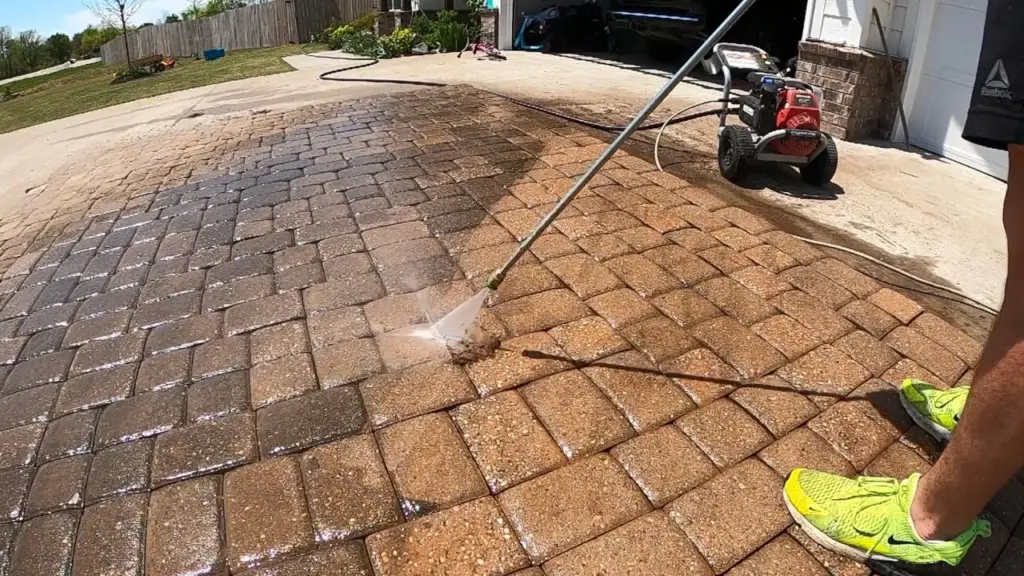
- Start by clearing away any leaves, weeds or debris in the area.
- Use a pressure washer to thoroughly clean the surface or use soapy water and a brush to eliminate dirt and grime.
- Rinse with water then allow it to dry completely; you can sweep away any remaining puddles to expedite drying time.
- When painting concrete surfaces, apply either a stain or coat of primer with either a paintbrush or spray.
- Wait for the first layer to dry completely before adding another. Similarly, let the primer dry completely before applying acrylic cement paint with either a roller or spray.
- Allow the surface to dry completely – this could take up to 24 hours.
- Apply another coat of paint and wait for it to dry completely.
- Apply sealant according to manufacturer’s recommendations, following its recommended drying time before applying another coat to pavers.
- Give the surface time to dry and cure completely, which could take up to two days.
It’s essential that you select an ideal time for painting your concrete pavers. Make sure the weather is favorable and consider enclosing the area temporarily to prevent anyone from stepping on the new paint.
Preparing for the paint
one important thing, if you’ve got old pavers, you will need to wash them down first, make sure we even got any sort of algae or anything like that on there, and make sure you give them a good power wash down, maybe give them a scrub or some patio cleaner or something.
Using water-based paint with rollers
So, if you’re using water-based paint you can use foam roller and nothing special. Really cheap to buy, ideal because you don’t have to get perfect finish because it’s obviously rough pavers.
Surface Preparation
Prior to painting concrete pavers, it is essential to prepare the surface. Use either a pressure washer or stiff-bristled brush with detergent for thorough cleaning of the pavers. Any existing paint or sealant should then be removed using chemical stripper or sandblasting, while cracks or damages must also be repaired beforehand for an even and smooth finish.
Type of Paint
The type of paint you select for your concrete pavers will depend on factors like their location, exposure to sunlight and weather conditions, as well as what finish you desire. For instance, if they are in a high traffic area, it’s recommended to use durable paint that can withstand abrasion and foot traffic. Likewise, when exposed directly to sunlight, UV-resistant paint should be used in order to prevent fading or discoloration.
Application Method
The paint application method can have a significant effect on the final look of concrete pavers. Common methods include using either a roller, brush or sprayer; rollers work best for small areas and edges while sprayers are ideal for larger ones. A brush may also be used to touch up or even out any uneven spots.
Drying Time and Curing
Once the concrete pavers have been painted, it is essential to allow sufficient drying time before walking or placing any objects on them. Drying times vary depending on the type of paint used and weather conditions; typically 24-48 hours for paint to dry completely. Furthermore, allow the paint to cure fully (which could take up to two weeks) before subjecting them to heavy foot traffic.
Maintenance
To preserve the painted concrete pavers, regular maintenance is essential. This includes sweeping and cleaning the surface regularly to prevent dirt and grime from building up. Any spills or stains should be cleaned promptly with mild soap and water. Furthermore, applying sealant every few years helps protect the paint and prevent fading.

